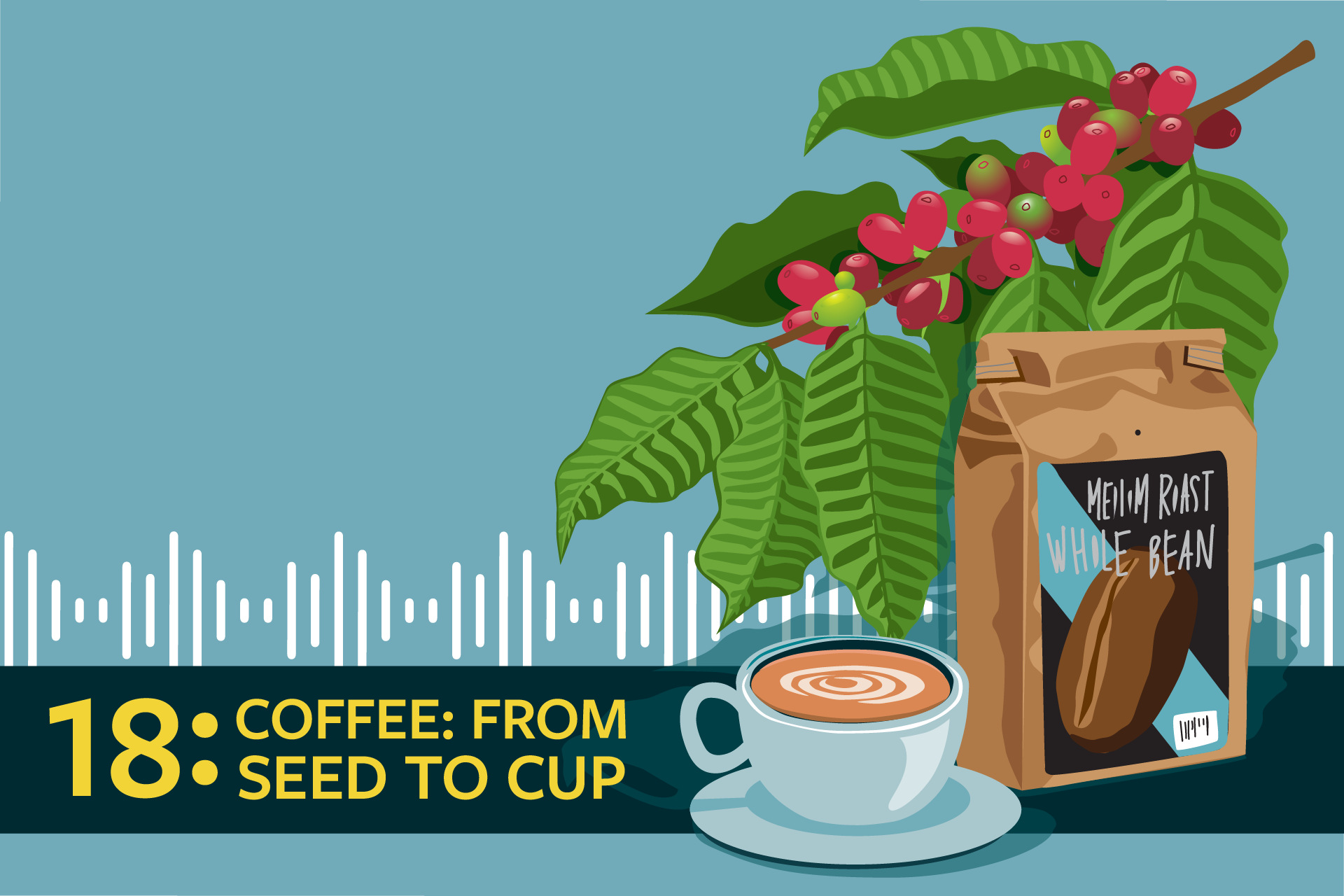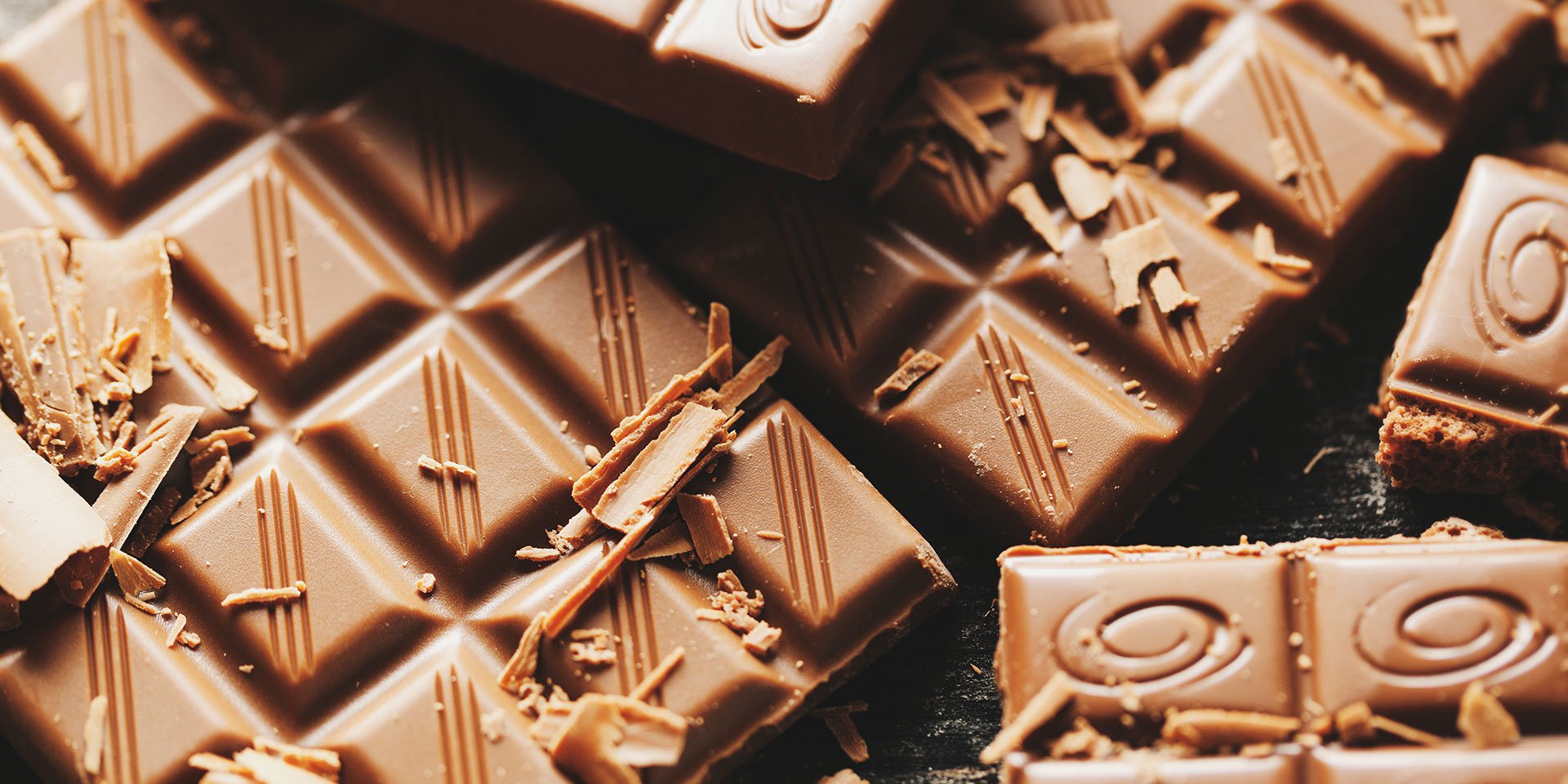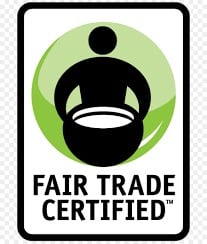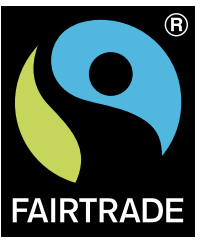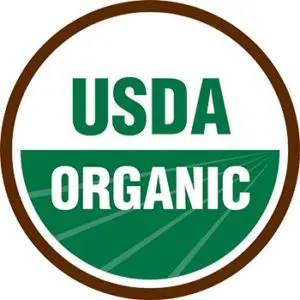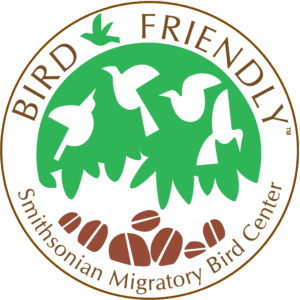The basics of coffee labeling
Coffee — one of the world’s favorite drinks, with consumption on the rise — is one of the most traded global commodities. But that doesn’t mean everyone is profiting: The United Nations Food & Agriculture Organization has observed “asymmetric income distribution among actors in the value chain” — a systemic issue that, unchecked, “can threaten the livelihood of millions of smallholder producers.” And as with any commodity product, the industrialization of coffee production has also taken a significant environmental toll.
As a product grown mostly in the Global South but consumed most heavily in the Global North, coffee today in some ways mirrors the colonial structures that made it a global commodity in the first place. It’s one of the reasons Bartholomew Jones got into the business. His company, Cxffeeblack, foregrounds the product’s African roots (the plant almost certainly originated in Ethiopia) and works exclusively with Black African producers and processors. “Coffee is a $400 billion industry globally,” says Jones. “And currently, according to the president of Uganda, less than one percent of that money goes to continental Africans.”
In the latest episode of our podcast, FoodPrint spoke with Jones and other coffee professionals about how they and their colleagues are working to make supply chains more transparent, sustainable and equitable. All agreed that finding a specialty coffee company — shorthand for one that sources from individual producers or small-scale importers and exporters, rather than buying commodity beans — is the first place to start. But you can also take a closer look at the bag: The labels and terms on everyday grocery-store coffee can still help you get a sense of where it came from, how it was grown and how it got into your hand.
Below, a breakdown of the terms and certifications you might encounter — and some brands that are working to make coffee better.
Terms to know
Certain basic information will be included on most coffee packaging, and there are common marketing terms you’ll often see, too. Here are a few words and phrases to expect and what they can (and cannot) tell you about the coffee you’re buying.
Single-origin
“Single-origin” is the term of choice for beans that come from — you guessed it — a single origin. While the scope is not regulated (or even universally agreed-upon) in the industry, the term usually refers to coffee sourced from a single growing region. Sometimes, it might even come from a single farm; these products can also be seen labeled as “estate” or “single-estate” coffee. The term often represents a level of traceability and conscious sourcing on the part of the roaster, but because it is not an official certification, it can’t tell you much on its own. Most specialty coffee will indicate which country (or occasionally, countries) the beans were sourced from, but not all will claim to be single-origin.
Blend
In the broadest terms, “blend” simply means that different beans have been mixed together, whether for economic reasons or, as is often the case, for taste. Blends can comprise the coffee sourced from different countries or a mix of different species entirely. (More on that below.) You may see the nebulous phrase “single-origin blend,” which usually denotes a mix of beans from different farms in the same region.
Arabica
Most coffee cultivated and consumed in this world comes from one of two species. Of these, Coffea arabica is dominant, making up about 60 percent of global production. Considered to be the superior option flavor-wise, it is often described as “smooth” or complex; almost any specialty coffee you’ll see in a café or store will be arabica beans.
Robusta
The other common coffee species is robusta (Coffea canephora). These beans are associated, sometimes unfairly, with lower-quality coffee, and can be “intense” or bitter — but are key in many coffee traditions, partly because they contain about twice as much caffeine as arabica. Robusta plants are also a compellingly climate-resilient crop, named for how hardy and prolific they are even in challenging conditions; some are experimenting with grafting or studying different varieties to help the industry adapt. Saveur recently described the rise of robusta as “the 2023 coffee trend nobody saw coming.”
Roast
Typically, the first time coffee arrives in the U.S. from elsewhere, it will be “green” — meaning the coffee fruit (or “cherry”) has been picked and dried, the skin and pulp removed, and the bean hulled and polished. But all coffee must also be roasted to some extent: It wouldn’t taste like coffee without it. “Some drying happens during the roasting process, but really what happens is this Maillard reaction,” says Dakota Graff of Onyx Coffee Lab, a guest on our coffee episode, “which will take all of these acids and sugars and convert them into something that’s soluble…and into a beautiful beverage.” Different roasting times and temperatures produce a spectrum of color and flavor, which traditionally ranges from “light roast” to “medium” to “dark.” Lighter roasts are often described as more complex or subtle, while darker roasts are “bolder,” sometimes with a smoky or nutty flavor. Companies that import and roast beans — whether for their own brand or to distribute to other businesses — are called “roasters.”
Shade-grown
Coffee is an understory plant: It grows best under a canopy of shade-providing trees. But over the past half-century or so, systems have been devised to create higher yields by growing coffee in full sun on large plantations. Often, land must be cleared to create these full-sun coffee farms, and the plants require more inputs to be productive in these conditions. Alternatively, shade growing in the traditional way protects the topsoil and requires fewer fertilizers and less pest management — crucially, without contributing to deforestation and biodiversity loss. Though you’ll frequently see the term used on packaging, there is no “shade-grown” certification, though some certifications do include stipulations about shade plants (see Smithsonian Bird Friendly, which we touch on later in this piece).
Direct trade
In direct trade arrangements, coffee bypasses the commodity market and goes straight from the producer, where it is harvested and processed, to the roaster, where it is finished and packaged for sale. Dialogue between producer and roaster — and fewer stops on the supply chain — can not only mean more money going into the hands of growers, but also facilitate more sustainable practices and a higher-quality product. But this model can be prohibitively expensive even without considering factors like cultural or language barriers, and is not the only way to operate responsibly.
Labels to look for
It’s certainly possible to find responsibly produced coffee that has no certifications at all, but certifications handled by third-party organizations can be a somewhat more objective measure of how your coffee was grown and processed. Below, we explain the ones you’ll see most frequently and where they might fall short. For more information, check out FoodPrint’s Food Label Guide.
Fair trade certifications
A coffee producer’s livelihood can be dependent on what is called the C-price — the commodity price of coffee, or specifically, what one pound of unroasted arabica beans will net on the Intercontinental Exchange. These commodity prices have no relation to the actual cost of producing coffee, and often fall below it; according to the coffee website Sprudge, “the five years from 2015 to 2020 saw the lowest sustained green [unroasted] coffee prices in history.”
The fair trade movement aims to improve farmer livelihoods through a more equitable system that works with producer cooperatives and establishes minimum prices and guaranteed premiums. The two big fair trade labels you’ll see in the U.S. are Fairtrade and Fair Trade Certified. Both have requirements for worker protections, living wages and health insurance. But the requirements for the latter are looser, part of the reason its certifying body, Fair Trade USA, split from Fairtrade International in 2011. And while these fair trade labels have some environmental stipulations — limiting pesticide use, for example — other, more sustainability-focused certifications are much more stringent.
There are other doubts about the adequacy of the fair trade certification system. Fair trade prices don’t always keep up with rising costs, and interested buyers are no guarantee. There are many who would agree with Anna Canning, a coffee industry veteran and guest on our podcast episode, who recently told Rewritten: “at this point, [ethical] certifications are working to serve corporations and the exploitative status quo.” Often, specialty roasters find they can do as much, if not more, to support farmers and other workers in coffee growing regions by simply building on-the-ground relationships themselves.
Organic certifications
One of the best sustainability certifications we have is the Department of Agriculture’s USDA Organic, which sets strong standards for organic crops: Industrial pesticides, antibiotics, synthetic fertilizers and sewage sludge are banned, as are GMOs. For a farm to earn certification, banned substances must not have been applied at any time during the previous three years. USDA works with dozens of accredited agents that certify operations to these standards around the U.S. and the world. One of the more famous is California Certified Organic Farmers (CCOF) — the first body in the country to offer an organic certification program, starting in the 1970s — which, like many, also offers its own seal, CCOF Certified Organic. Because CCOF uses the USDA standards, certified companies can use either (or both) seals on their packaging. Another of the country’s most established certifiers is the Organic Crop Improvement Association, OCIA International.
It’s worth noting that USDA Organic does not set standards for worker welfare, and in the case of coffee, does not enforce a minimum price or require farmers be given any additional compensation for cultivating to a higher standard. And though organic coffee is often shade-grown, there is no requirement for shade levels. Acquiring certification is a potentially expensive proposition for producers already working on slim margins; many operations grow organically in all but name, but choose to not pursue certification.
Certain “add-on” labels require USDA Organic certification as a baseline but are designed to go beyond its requirements, which some farmers see as being increasingly watered down. The Real Organic Project requires some protections for hired workers as part of its certification, but is focused on the U.S. and works with only a few farms, all in Hawaiʻi, that produce coffee. Regenerative Organic Certified (which offers bronze, silver and gold tiers) also requires that producers maintain some “social fairness” certification, like one of the fair trade labels, as a baseline. The first coffee products with this label became available in the U.S. in fall 2022.
Other certifications
Smithsonian Bird Friendly is a certification for coffee and cocoa developed by the Smithsonian Migratory Bird Center. In addition to requiring a baseline USDA Organic certification, the program is focused on preventing deforestation and encouraging biodiversity as a means of conserving habitat for birds — meaning it’s shade-grown by default. This certification does not contain any stipulations about pricing or worker welfare.
Rainforest Alliance has requirements for “natural vegetation cover,” but there is no core requirement when it comes to shade. Additionally, organic certification is not required, though there is a stated focus on worker rights and living wages. Rainforest Alliance has been criticized in the past for weak standards and uneven enforcement; in the 2010s, exploitative labor practices were found at several Brazilian coffee farms certified by the organization. (After its 2017 merger with the Dutch organization Utz, Rainforest Alliance released new standards in 2020.)
Some coffee companies are also certified as Benefit Corporations, or B Corps, a label designed to indicate “accountability and transparency” in their operations. Here, too, some have lamented what they see as diminishing standards; moves like the 2022 certification of Nespresso (whose ethical violations, including child labor, have been well-documented) have inspired criticism of its standards and process.
Find coffee labels and certifications
Brands doing better
“There are a lot of great coffee roasters in the U.S. that are doing great work and partnering with great producers,” says Graff. “It feels really good, as part of the human experience, to consume a product where you’re like, ‘You know what? I know who grew this, and I care for them and I pay them a good wage.’ And that’s really what specialty coffee is about.”
Next time you’re shopping, you can look for certifications as well as efforts at transparency — brands that are willing to share their story. In addition to Onyx Coffee Lab and Cxffeeblack, there are many other companies focused on sourcing their product carefully and prioritizing equity and sustainability along the supply chain. A few that are on our radar, from which you can purchase locally or order online:
Birds & Beans
Grounded in the values of the Smithsonian Bird Friendly program, this “triple certified” company has also obtained USDA Organic and Fair Trade USA certification for all of its products and donates 5 percent of proceeds to conservation causes.
Learn more: birdsandbeanscoffee.com
Caribbrew
A Black-owned, woman-founded company, Caribbrew maintains direct trade relationships with coffee cooperatives in Haiti — half of their partner farmers are also women — and pays above the fair trade minimum with the goal of sustaining jobs in a country where un- and underemployment is a major concern.
Learn more: caribbrew.com
Equal Exchange
A pioneer in the farmer-partnership model, Equal Exchange has an online database of all the farmer cooperatives it works with and is structured as a worker co-op itself. After starting out with specialty coffee back in 1986, it has since expanded to include tea, chocolate, olive oil and more and can be found in major grocery stores.
Learn more: shop.equalexchange.coop
Junior’s Roasted Coffee
Through its Cost of Production Covered project, Junior’s works with farmers to set prices based on their actual production costs (with a minimum gross margin) and educates both consumers and other roasters about equitable pricing models.
The company has also piloted a CSA program, Community Funded Coffee.
Learn more: juniorsroastedcoffee.com
Kahawa 1893
Kahawa 1893, founded by Kenyan-born entrepreneur Margaret Nyamumbo, sources from cooperatives of women farmers in Kenya, Rwanda and the Democratic Republic of the Congo. Consumers make a (fully matched) tip directly to the farmers with the QR code printed onto every bag.
Learn more: kahawa1893.com
Nguyen Coffee Supply
The brainchild of Sahra Nguyen, the daughter of Vietnamese refugees, this company has a direct trade relationship with a farm in Vietnam’s Central Highlands and is one of robusta’s biggest cheerleaders in the U.S. specialty coffee scene (though it does offer arabica beans, too).
Learn more: nguyencoffeesupply.com
Stumptown
While not all of its coffee is organic, this coffee giant offers a number of OCIA-certified products, including single-origin beans sourced from cooperatives in Ethiopia and Indonesia. Stumptown coffee is available at several major grocery chains.
Learn more: stumptowncoffee.com
Get the latest food news, from FoodPrint.
By subscribing to communications from FoodPrint, you are agreeing to receive emails from us. We promise not to email you too often or sell your information.
Top photo by ID_Anuphon/Adobe Stock.
More Reading
Use a grocery store trip to teach kids environmental stewardship
July 7, 2025
Learn how to read food labels with our short Label Literacy course
May 15, 2025
When "Made in America" isn't really: Country-of-origin labeling for beef
May 8, 2025
Can the FDA's new rules help people eat healthier?
March 19, 2025
MSG – a vegan pantry essential – makes a comeback
February 27, 2025
Dr. Bronner’s dumped its B Corp certification. Was it the right move?
February 21, 2025
Can climate-friendly food labels transform eaters into environmentalists?
February 18, 2025
Finding a pet food that aligns with your values
February 11, 2025
Busting common myths about organic food
December 23, 2024
The USDA updated label guidelines to increase transparency — is it enough?
September 12, 2024

